 1986 Toyota Camry II Wagon (V20) Dimensions, Size & Specs
1986 Toyota Camry II Wagon (V20) Dimensions, Size & Specs
Measurements of the 1986 Toyota Camry II Wagon, engineered for optimal performance and comfort
| Dimensions | |
|---|---|
| Length: | 4610 mm181.5 in15.1 ft |
| Width: | 1710 mm67.3 in5.6 ft |
| Height: | 1440 mm56.7 in4.7 ft |
| Trunk Capacity: | 633 liter22.4 cu ft |
| Trunk Capacity (Max): | 1300 liter45.9 cu ft |
| Weight Specifications | |
| Curb Weight: | 1155-1425 kg2546-3142 lbs |
| Maximal permitted Weight: | 1760-1930 kg3880-4255 lbs |
| Roof Load: | 100 kg220 lbs |
| Tire Specifications | |
| Rims Sizes: |
|
| Tire Sizes: |
|
The Toyota Camry II Wagon (V20), produced between 1986 and 1991, represents the second generation of the Camry lineup with a practical station wagon body style. Measuring 4610 mm (181.5 inches) in length, 1710 mm (67.3 inches) in width, and 1440 mm (56.7 inches) in height, it offers a balanced footprint well-suited for families and those needing versatile cargo space. The vehicle's curb weight ranges from 1155 to 1425 kilograms (2547 to 3141 pounds), depending on specifications, with a maximum authorized weight between 1760 and 1930 kilograms (3881 to 4256 pounds), reflecting its solid build and load capacity. One of the standout features of the V20 Wagon is its generous luggage capacity, providing 633 liters (22.3 cubic feet) of space with rear seats upright, which expands significantly to 1300 liters (45.9 cubic feet) once the rear seats are folded down, making it highly practical for transporting larger loads or gear. It supports a roof load capacity of up to 100 kilograms (220 pounds), allowing additional cargo to be carried on the roof racks. Wheel options include 14-inch and 15-inch rims paired with tire sizes 185/70 R14 and 195/60 R15, offering a balance of comfort and handling suitable for a midsize family wagon. Overall, the Toyota Camry II Wagon (V20) from the late 1980s to early 1990s combines reliable performance with spacious interior dimensions, making it a solid choice in the station wagon segment for those valuing cargo versatility and durable build quality.
Discover the standout features that make the 1986 Toyota Camry II Wagon a leader in its class
Have a question? Please check our knowledgebase first.
The Toyota Camry II Wagon (V20), produced from 1986 to 1991, measures 4610 mm (181.5 inches) in length, 1710 mm (67.3 inches) in width, and 1440 mm (56.7 inches) in height. These dimensions give it a balanced profile typical of mid-sized station wagons of its era, offering a spacious cabin without being overly bulky on the road.
The curb weight of the Toyota Camry II Wagon (V20) ranges between 1155 kg to 1425 kg (2548 to 3141 lbs), depending on the specific trim and equipment level. Its maximum allowable weight (gross vehicle weight) ranges from 1760 kg to 1930 kg (3881 to 4255 lbs), indicating how much weight the vehicle can safely carry including passengers and cargo.
The Toyota Camry II Wagon (V20) offers a spacious luggage capacity of 633 liters (22.3 cubic feet) with the rear seats upright, suitable for typical family or daily use. When the rear seats are folded down, the cargo space expands significantly to 1300 liters (45.9 cubic feet), providing ample room for larger items or increased storage needs common with station wagons.
The Toyota Camry II Wagon (V20) has a roof load limit of 100 kg (220 lbs). This means you can safely install roof racks, cargo boxes, or other accessories as long as the combined weight of the equipment and load does not exceed this limit. Such capacity is adequate for typical leisure equipment like bicycles or luggage carriers without compromising vehicle safety.
The Toyota Camry II Wagon (V20) came equipped with options for 14-inch or 15-inch rims. Compatible tire sizes include 185/70 R14 and 195/60 R15. Proper tire sizing is essential for maintaining ride comfort, handling characteristics, and safety, so sticking with these specifications is recommended to preserve the vehicle’s original driving experience.
A standard single-car garage generally measures around 2.4 to 2.7 meters (7.9 to 8.9 feet) in width and about 5.0 to 6.0 meters (16.4 to 19.7 feet) in length. With the Camry II Wagon’s length of 4.61 meters (181.5 inches) and width of 1.71 meters (67.3 inches), it comfortably fits within these dimensions, leaving enough room for door opening and some storage around the vehicle.
The Toyota Camry II Wagon (V20) is slightly larger and heavier than its predecessor, the first-generation Camry wagon produced until 1986. The V20 increased length to 4610 mm (181.5 inches) compared to earlier models, offering more interior space and improved comfort, while curb weight also rose to a maximum of 1425 kg (3141 lbs) reflecting enhancements in safety features and build quality. These changes contributed to a more refined driving experience and greater practicality.
In the late 1980s, mid-size wagons from manufacturers like Honda Accord, Ford Taurus, and Nissan Maxima typically displayed similar dimensions. The Camry II Wagon’s length of 4610 mm (181.5 inches) and width of 1710 mm (67.3 inches) place it competitively within this segment, often offering better luggage capacity and interior space compared to some rivals. Its moderate roof height and weight helped it strike a balance between agility and practicality.
The Camry II Wagon's moderate dimensions—with a length of 4610 mm (181.5 inches) and width of 1710 mm (67.3 inches)—make it easy to maneuver in urban environments while still providing stability and comfort on highways. Its height of 1440 mm (56.7 inches) lowers aerodynamic drag compared to taller SUVs, aiding fuel efficiency. The relatively light curb weight (starting at 1155 kg/2548 lbs) combined with manageable size enhances its usability for daily commuting, parking, and longer road trips.
With a luggage capacity of 633 liters (22.3 cubic feet) expanding to 1300 liters (45.9 cubic feet) when rear seats are folded, the Camry II Wagon (V20) ranks well among station wagons of the late 1980s in terms of cargo practicality. The spacious interior comfortably seats four to five passengers. Combined with its moderate length and width, this makes it a versatile vehicle ideal for families needing space without driving a larger, bulkier wagon or SUV.
Discover similar sized cars.
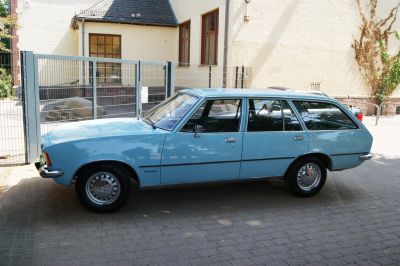
| Production: | 1972-1977 |
|---|---|
| Model Year: | 1972 |
| Length: | 4594 mm180.9 in |
| Width: | 1715 mm67.5 in |
| Height: | 1440 mm56.7 in |

| Production: | 2017-2021 |
|---|---|
| Model Year: | 2017 |
| Length: | 4585 mm180.5 in |
| Width: | 2043 mm80.4 in |
| Height: | 1457-1472 mm57.4-58.0 in |

| Production: | 1995-2001 |
|---|---|
| Model Year: | 1996 |
| Length: | 4671 mm183.9 in |
| Width: | 1751 mm68.9 in |
| Height: | 1480-1510 mm58.3-59.4 in |
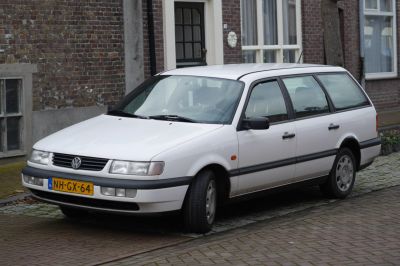
| Production: | 1993-1997 |
|---|---|
| Model Year: | 1993 |
| Length: | 4595 mm180.9 in |
| Width: | 1720 mm67.7 in |
| Height: | 1445-1485 mm56.9-58.5 in |

| Production: | 1994-1998 |
|---|---|
| Model Year: | 1992 |
| Length: | 4600 mm181.1 in |
| Width: | 1690 mm66.5 in |
| Height: | 1465 mm57.7 in |
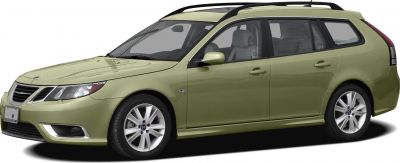
| Production: | 2007-2010 |
|---|---|
| Model Year: | 2008 |
| Length: | 4670 mm183.9 in |
| Width: | 2038 mm80.2 in |
| Height: | 1496 mm58.9 in |
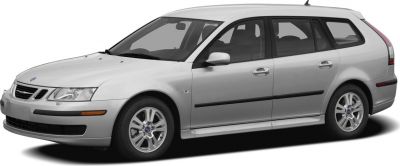
| Production: | 2005-2007 |
|---|---|
| Model Year: | 2005 |
| Length: | 4654 mm183.2 in |
| Width: | 2038 mm80.2 in |
| Height: | 1492-1507 mm58.7-59.3 in |
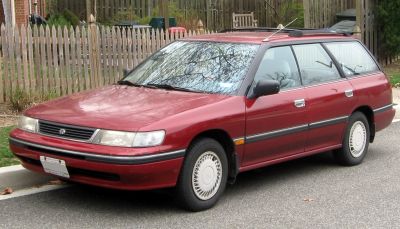
| Production: | 1991-1994 |
|---|---|
| Model Year: | 1991 |
| Length: | 4620 mm181.9 in |
| Width: | 1690 mm66.5 in |
| Height: | 1420-1480 mm55.9-58.3 in |
